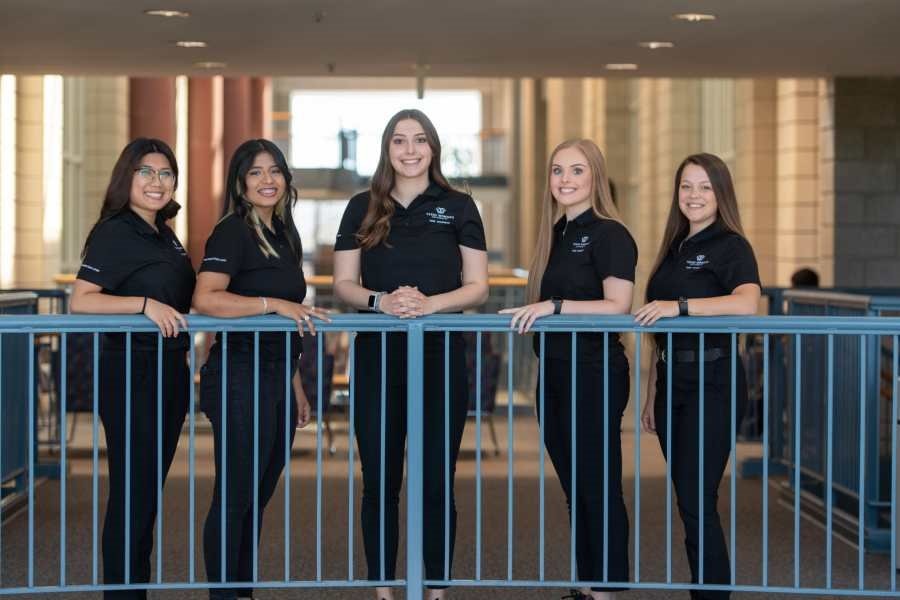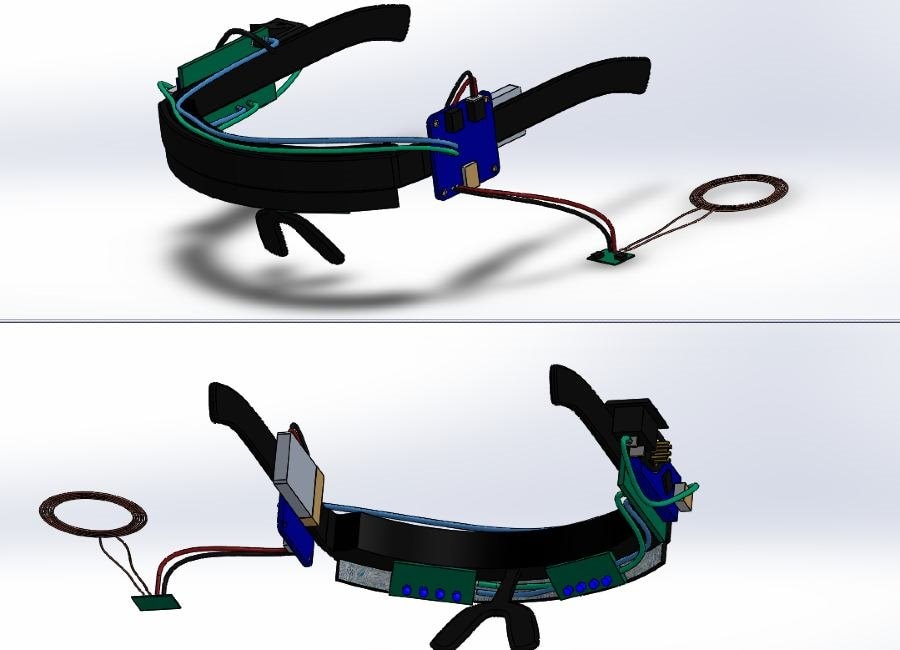
The Oneiroi team, as pictured above, consists of Andrea Kim, Andrea Martinez, Natalie Wilkinson, Melanie Meek, and Casey Rice. (Image Credit: Texas Woman’s University)
The Oneiroi, a team of five kinesiology students from Texas Women’s University, concluded their final college semesters by searching for ways to improve astronauts’ sleep while in space. They participated in the Texas Space Grant Consortium Design Challenge, which provides undergraduates with the opportunity to discover innovative solutions for common challenges NASA faces.
The students, Andrea Kim, Andrea Martinez, Natalie Wilkinson, Melanie Meek, and Casey Rice, worked on their project for a semester, coming up with a way to address circadian desynchronization. This sleep-wake cycle disruption is caused by changes in the 24-hour light/dark cycle that occurs in the Earth’s atmosphere. Desynchronization can negatively affect astronauts’ mental, physical, and behavioral processes.
The team solved that issue by developing wearable and individualized light therapy treatment glasses designed to recalibrate an astronauts’ sleep/wake cycle. It works by emitting a specific color and intensity for a certain amount of time, helping with circadian entrainment and promoting alertness. However, the team didn’t know how to use the tools and software to develop, code, and test their prototype. So they learned these skills through online tutorials and consulting those experienced with the tools.

The special glasses can be worn by astronauts to help with their sleep/wake cycle while in space. It works by emitting blue light for certain time intervals, helping with circadian entrainment. (Image Credit: Texas Woman’s University)
“Pulling inspiration from current technology available for persons who experience Seasonal Affective Disorder and circadian disorders on Earth, while considering the constraints of the International Space Station (ISS) environment and equipment, the team was able to determine the ideal features necessary for an individualized, portable and wearable light therapy treatment,” Wilkinson said.
While wearing the device, a user can carry on with their regular tasks, receiving therapy simultaneously. Plus, it consumes little power compared to the ISS’ lighting systems. The device also features wireless charging capabilities, and astronauts can control the coding and design. Lastly, the glasses include a short-wavelength blue light since the color and intensity enhance alertness and performance while providing a powerful effect toward resetting the circadian clock.
Once they created the prototype, the team tested it with heart rate variability (HRV) to determine whether an astronaut is ready to perform daily tasks and an electroencephalogram (EEG) to test participants’ brainwaves before and after light therapy. They also used a NASA-developed psychomotor vigilance test (PVT), which contains a sleep diary, reaction self-test, and Karolinska Sleepiness Scale questionnaire.
The team was split into two, a design team focusing on researching products to use, which helped to ensure efficiency and aesthetics. Meanwhile, the research team collected and documented research o support the project and design. Overall, it took about a month and $250 to develop the device. They also said it would be less costly if NASA manufactured them in bulk, which would also take less time.
Have a story tip? Message me at: http://twitter.com/Cabe_Atwell
